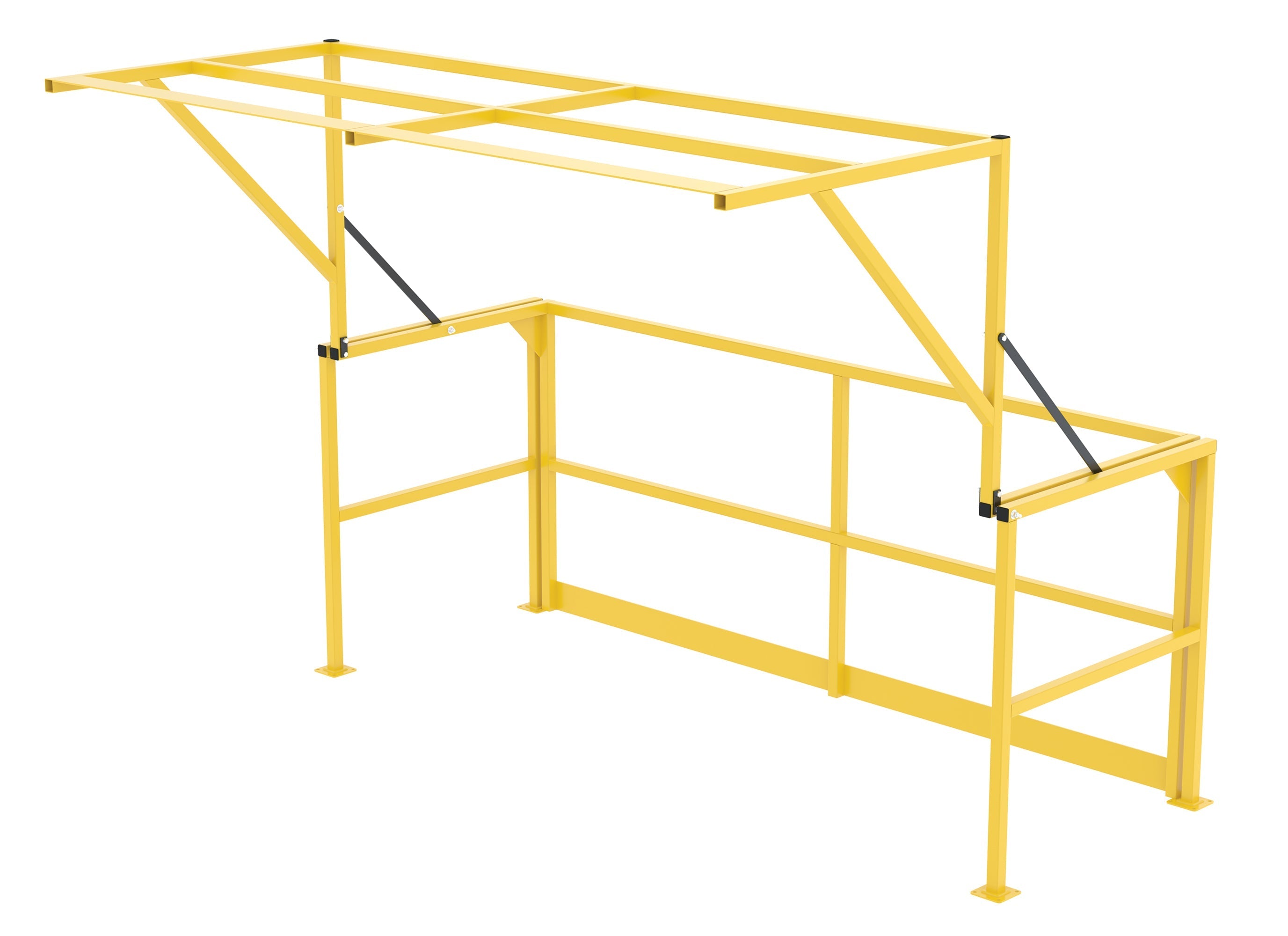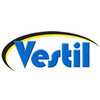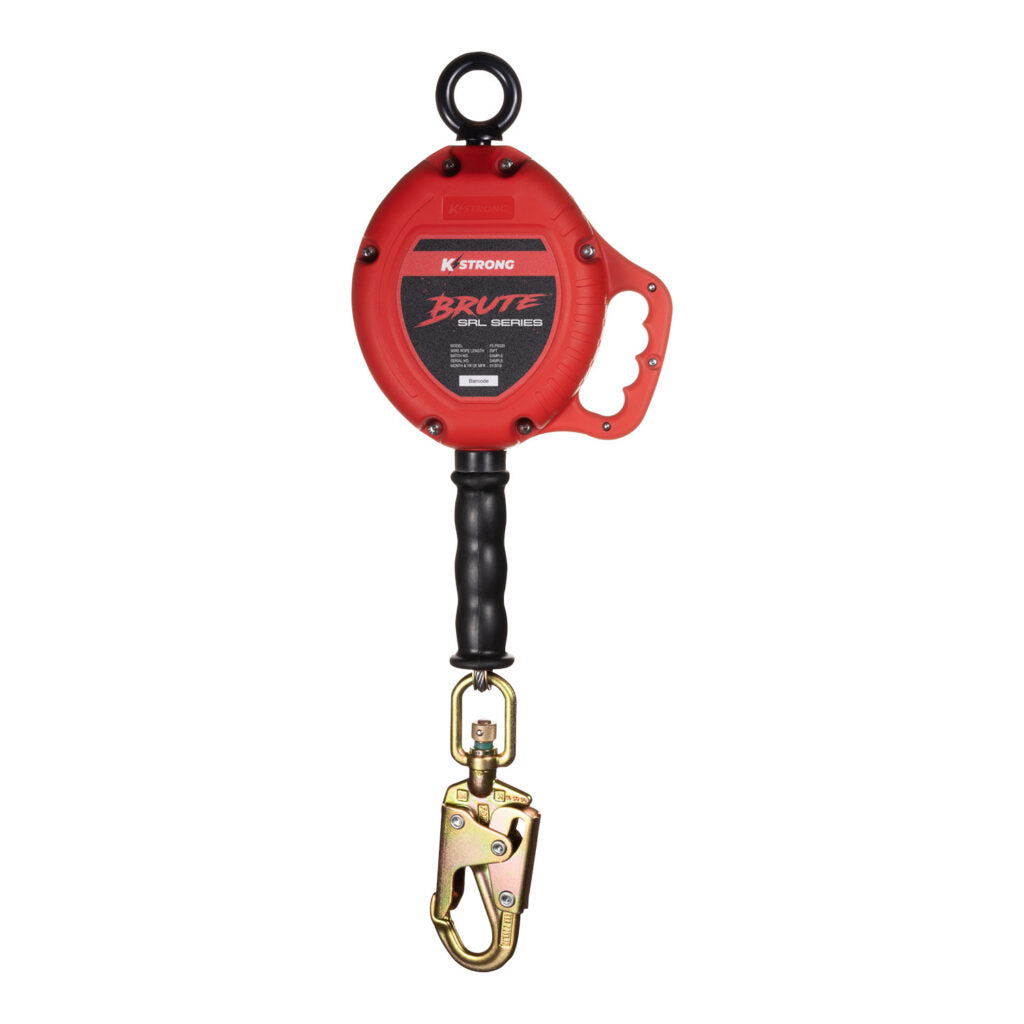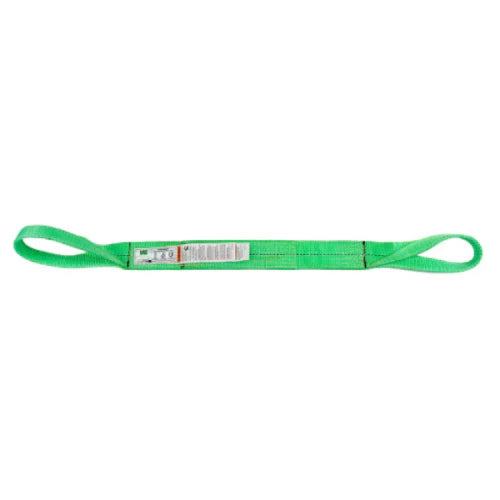What is a web sling?
Web slings, otherwise known as lifting straps, strops or webbing slings are usually made from polyester or nylon and are designed to lift heavy loads. The most popular type of sling, they are flexible, with their stretchy characteristics being crucial in minimising shock loading problems. Polyester web slings are generally found in the maintenance department of most manufacturing environments, and they are most commonly used in the material handling industry.
Advantages of using a web sling
- They have a wider surface area than a chain/wire rope, which is crucial in distributing the reaction force on the object being lifted, thus reducing the potential for damage to the load.
- Web slings weigh only 20% to 30% of a wire rope sling of equivalent capacity, meaning they are portable and easier for handling. For construction professionals who may work in various locations, their portability is a great advantage that will allow for increased efficiency wherever you may be working.
- Their lightweight and compact properties make them perfect for economical storage.
- Their flexible design means that web slings can easily be wrapped around loads that are an irregular shape. Their lightweight, soft and stretchy characteristics help to minimise shock loading problems, as well as providing minimal scratching or denting to the load being lifted or lowered.
- They are significantly cheaper than chain or wire ropes, so even businesses on the tightest of budgets will not have to compromise on safety.
- With an elongation as low as 3% to 7% under load, web slings make handling heavy loads easier for crane operators, so they are perfect for use in lifting/lashing.
- Web slings are extremely versatile – they can be used with cranes as crane slings, for cargo handling, and even recreationally! – so, they provide the opportunity to be flexible with your specifications.
- Web slings can be custom-made, with the length, width and strength all being adjustable to suit your exact needs.
- With capacities of up to 250-Ton, the use of a web sling will allow for more frequent and faster lifting.
Buyers’ Guide
There are a huge range of web slings available for a multitude of lifting applications, so here’s a guide to choosing the right sling for your company’s needs:
Material: polyester or nylon?
For most applications, the webbing material won’t make much difference in the quality, capacity or stretch of the web sling. However, in certain applications, you will need to consider the stretch of the sling at capacity, as well as its resistance to acids or bleaches if it will be used in a chemically active environment. Slings can be made from nylon or polyester.
Polyester web slings are used in conditions where acid is present and minimum stretch is needed. Polyester is a material unaffected by common acids and bleaching agents. However, this material is unsuitable for use in environments where concentrated sulphuric acid or alkaline are present. It is also unsuitable in environments where temperatures exceed 194°F. Its stretching capacity is around 3%.
Though nylon slings are also unsuitable for use in environments where temperatures exceed 194°F, the two slings’ similarities stop there. Nylon is unaffected by grease and oil, having excellent chemical resistance to aldehydes, ethers, and strong alkalis. However, unlike polyester, this material is not suitable for use with acids and bleaching agents. Its stretching capacity is around 8%-10%.
The configuration of your sling
Web slings come in several different configurations, so here is a guide to the different types of slings you can buy:
Eye and Eye (EE) Web Slings
EE web slings have eyes sewn into both ends of the sling. They can either have a flat eye or a twisted eye on both ends. Flat eye slings can be used in a choker hitch, basket hitch or vertical hitch. Meanwhile, twisted eye slings have eyes that are twisted 90° to form a better choker hitch.
Endless / Infinite Loop (EN) Web Slings
EN web slings can be used in all three types of sling hitches. The sling can be rotated throughout its service life to minimize wear and avoid repetitive use damage.
Reverse Eye (RE) Web Slings
RE web slings are actually EN slings with butted edges sewn together to double the sling width. RE slings typically have reinforced eyes and wear pads on both sides of the body for premium resistance to wear and abrasion.
Triangle / Choker Fittings (TC) Web Slings
This type of sling is configured with a triangle and choker fitting on either end. These types of slings are typically used in a choker hitch and can be used in vertical and basket hitches as well.
Triangle / Triangle Fittings (TT) Web Slings
This type of sling is configured with a triangle fitting on each end. These types of slings are normally used in a basket hitch, but can also be used in a vertical hitch. They cannot be used as a choker.
Wide Lift (LT) Web Slings
LT slings provide more surface area than traditional slings, providing additional load stability for bulky loads and added protection for fragile loads or finished surfaced. They are used in a basket hitch.
Ply number
The ply number is how many layers of webbing make up the body of the sling. Webbing slings are usually available in 1, 2, 3, or 4 ply configurations. The more plies there are, the stronger the sling will be.
Width of the sling body
A wider sling body will allow the weight of your load to be distributed over a larger surface area, thus providing better load balance and control for large or heavy loads, as well as greater protection to delicate or finished surfaces. Typical slings can range anywhere from 1” to 12” wide, however, custom orders can be made for larger sizes.
Overall length of the sling
Web slings can come in practically any length – though many manufacturers offer standardised lengths between 2 and 20 feet, customised sling lengths are also common, so you can find a web sling designed to your exact needs.
Sling length is determined by measuring from the top load-bearing point to the bottom load-bearing point. An EE sling is measured from the tip of one eye, to the tip of the other eye. Multi-leg sling assemblies, or single-leg slings with fittings, should be measured from the load-bearing point of any rings, hooks or fittings.
Additional cut, wear or abrasion protection
By incorporating added wear, cut, and abrasion protection to your sling, you can help extend the service life of the product and get a better return on your investment. Here are some options that can be added to your sling:
- Sling wear pads: protect slings against cutting and abrasion. These can be sewn into the webbing material at specific wear points along the sling body or in the eyes.
- Edge guards: offer added protection at spots prone to abrasion, wear or cutting.
- Sleeve/Tube: slides over the body of the sling to protect both sides of the sling while in use.
- Wrap: similar to a sleeve, except it is sewn onto the body of the sling.
Coating: a special coating that protects against moisture and dirt, as well as reducing abrasion, can be added to the webbing material.
























